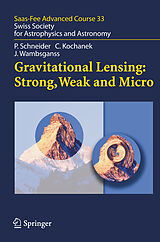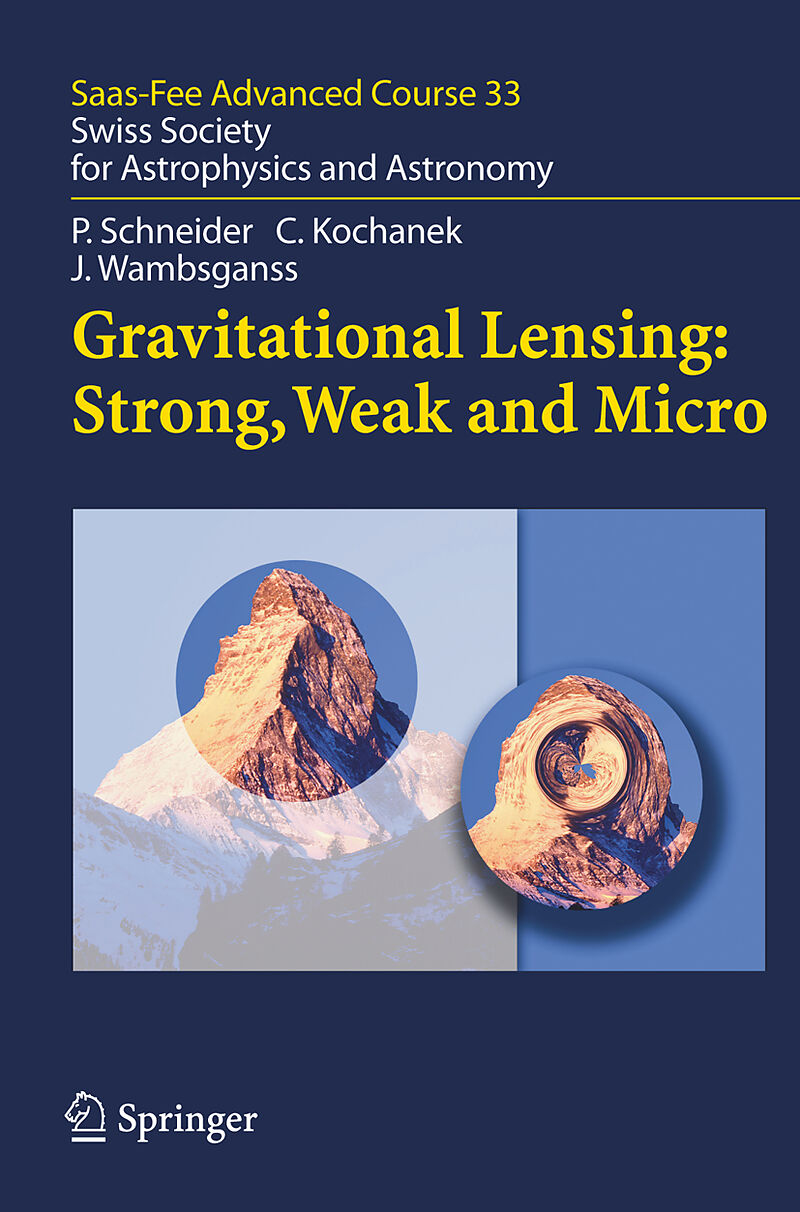Gravitational Lensing: Strong, Weak and Micro
Einband:
Fester Einband
EAN:
9783540303091
Untertitel:
Saas-Fee Advanced Course 33
Autor:
Peter Schneider, Christopher Kochanek, Joachim Wambsganss
Herausgeber:
Springer Berlin Heidelberg
Auflage:
2006
Anzahl Seiten:
572
Erscheinungsdatum:
05.05.2006
ISBN:
354030309X
The observation, in 1919 by A.S. Eddington and collaborators, of the gra- tational de?ection of light by the Sun proved one of the many predictions of Einstein's Theory of General Relativity: The Sun was the ?rst example of a gravitational lens. In 1936, Albert Einstein published an article in which he suggested - ing stars as gravitational lenses. A year later, Fritz Zwicky pointed out that galaxies would act as lenses much more likely than stars, and also gave a list of possible applications, as a means to determine the dark matter content of galaxies and clusters of galaxies. It was only in 1979 that the ?rst example of an extragalactic gravitational lens was provided by the observation of the distant quasar QSO 0957+0561, by D. Walsh, R.F. Carswell, and R.J. Weymann. A few years later, the ?rst lens showing images in the form of arcs was detected. The theory, observations, and applications of gravitational lensing cons- tute one of the most rapidly growing branches of astrophysics. The gravi- tional de?ection of light generated by mass concentrations along a light path producesmagni?cation,multiplicity,anddistortionofimages,anddelaysp- ton propagation from one line of sight relative to another. The huge amount of scienti?c work produced over the last decade on gravitational lensing has clearly revealed its already substantial and wide impact, and its potential for future astrophysical applications.
Includes supplementary material: sn.pub/extras
Klappentext
The theory, observations, and applications of gravitational lensing constitute one of the most rapidly growing branches of astrophysics. The gravitational deflection of light generated by mass concentrations along a light path produces magnification, multiplicity, and distortion of images and delays photon propagation from one line of sight relative to another. The huge amount of scientific work on gravitational lensing produced over the last decade has clearly revealed its already substantial and wide impact and its potential for future astrophysical applications. The up-to-date contributions in this book are based on the lecture notes of the 33rd SaasFee Advanced Course of the Swiss Society of Astronomy and Astrophysics, entitled Gravitational Lensing: Strong, Weak, and Micro. The book comprises four complementary parts, written by leading experts in the field, constituting a genuine textbook about gravitational lensing: • Peter Schneider Part 1: Introduction to Gravitational Lensing and Cosmology • Christopher Kochanek Part 2: Strong Gravitational Lensing • Peter Schneider Part 3: Weak Gravitational Lensing • Joachim Wambsganss Part 4: Gravitational Microlensing Students and researchers alike will benefit from this comprehensive presentation of the astrophysical and astronomical aspects of gravitational lensing.
Inhalt
to Gravitational Lensing and Cosmology.- Strong Gravitational Lensing.- Weak Gravitational Lensing.- Gravitational Microlensing.

Leider konnten wir für diesen Artikel keine Preise ermitteln ...
billigbuch.ch sucht jetzt für Sie die besten Angebote ...
Die aktuellen Verkaufspreise von 6 Onlineshops werden in Realtime abgefragt.
Sie können das gewünschte Produkt anschliessend direkt beim Anbieter Ihrer Wahl bestellen.
Loading...
Die aktuellen Verkaufspreise von 6 Onlineshops werden in Realtime abgefragt.
Sie können das gewünschte Produkt anschliessend direkt beim Anbieter Ihrer Wahl bestellen.
| # | Onlineshop | Preis CHF | Versand CHF | Total CHF | ||
|---|---|---|---|---|---|---|
| 1 | Seller | 0.00 | 0.00 | 0.00 |
